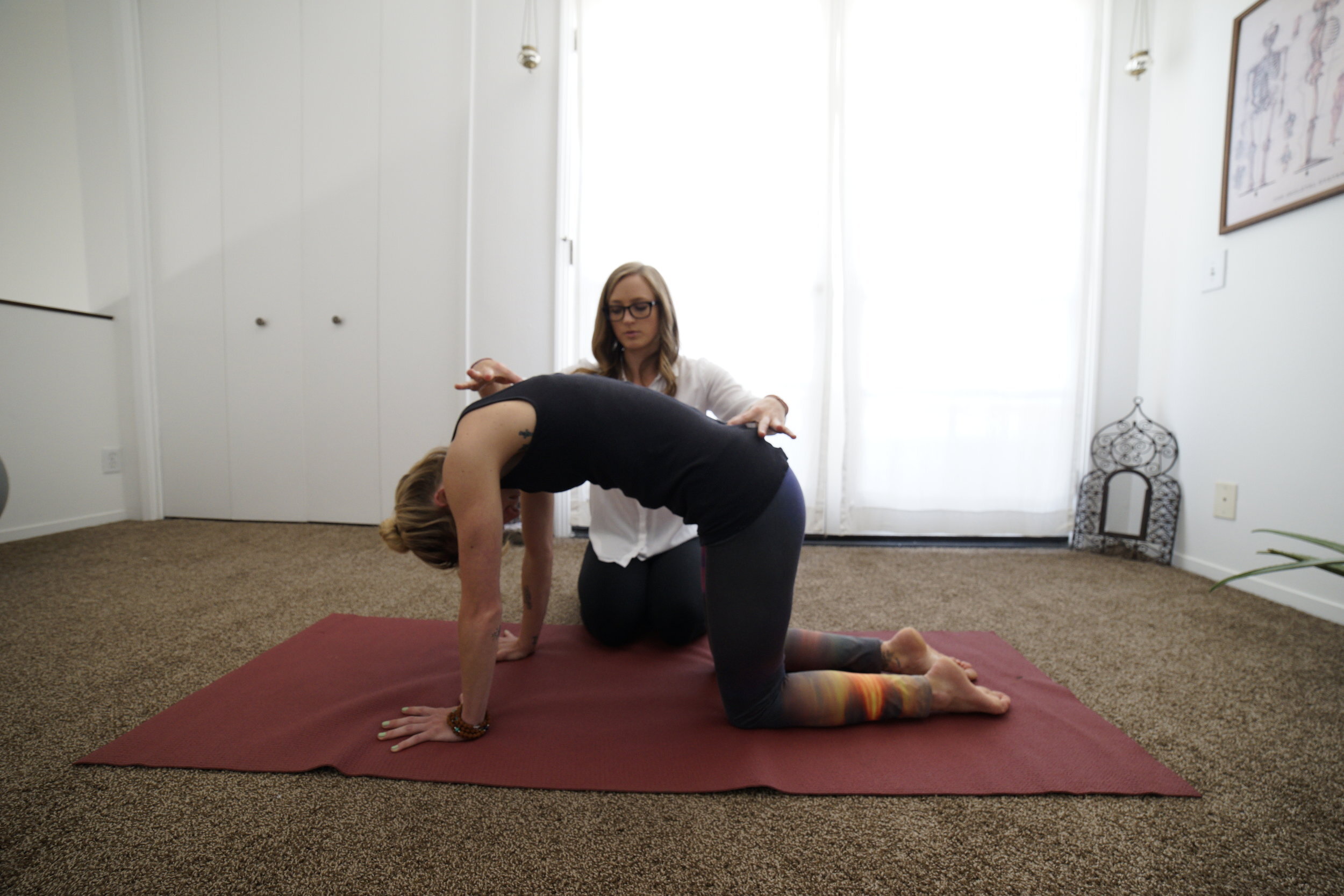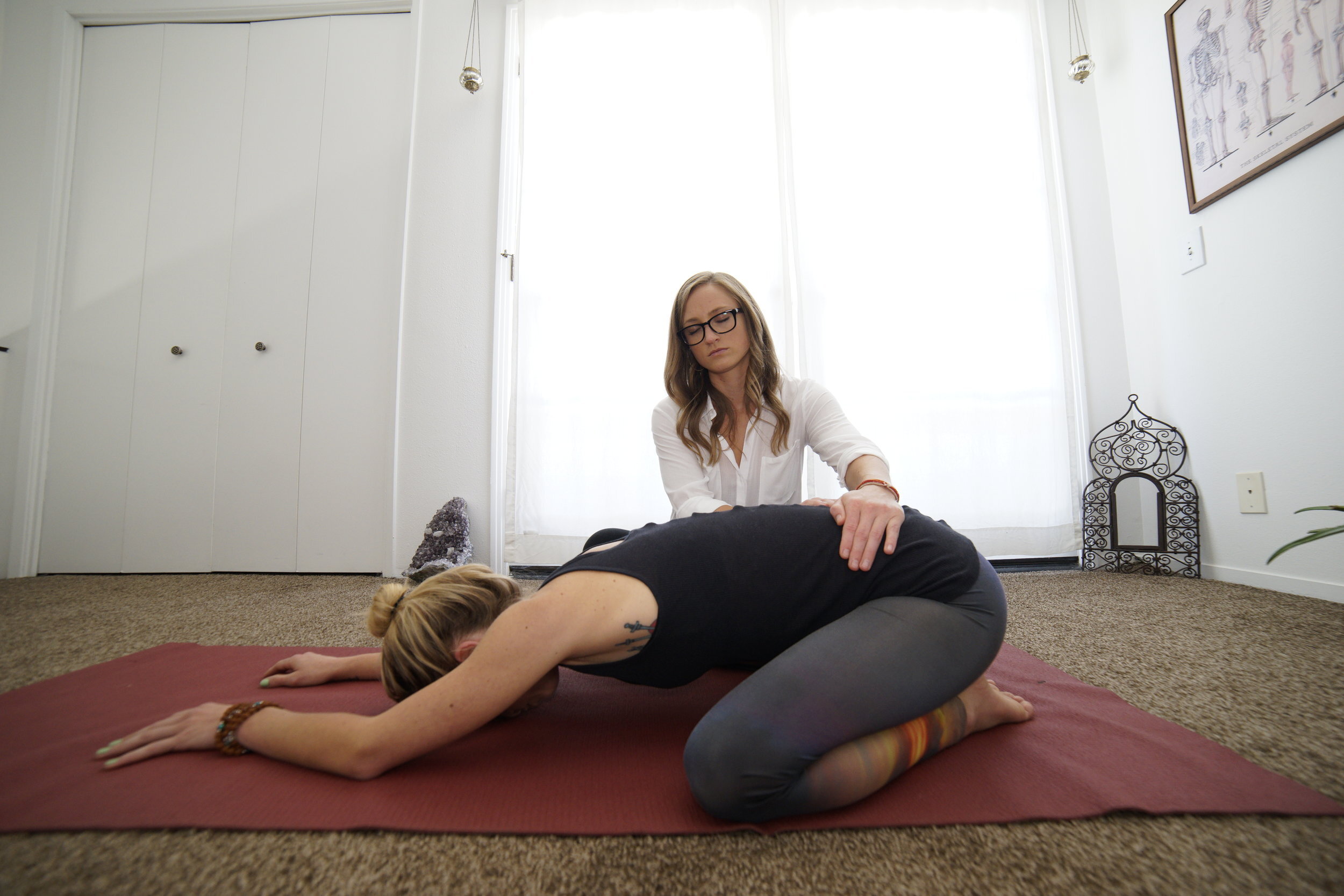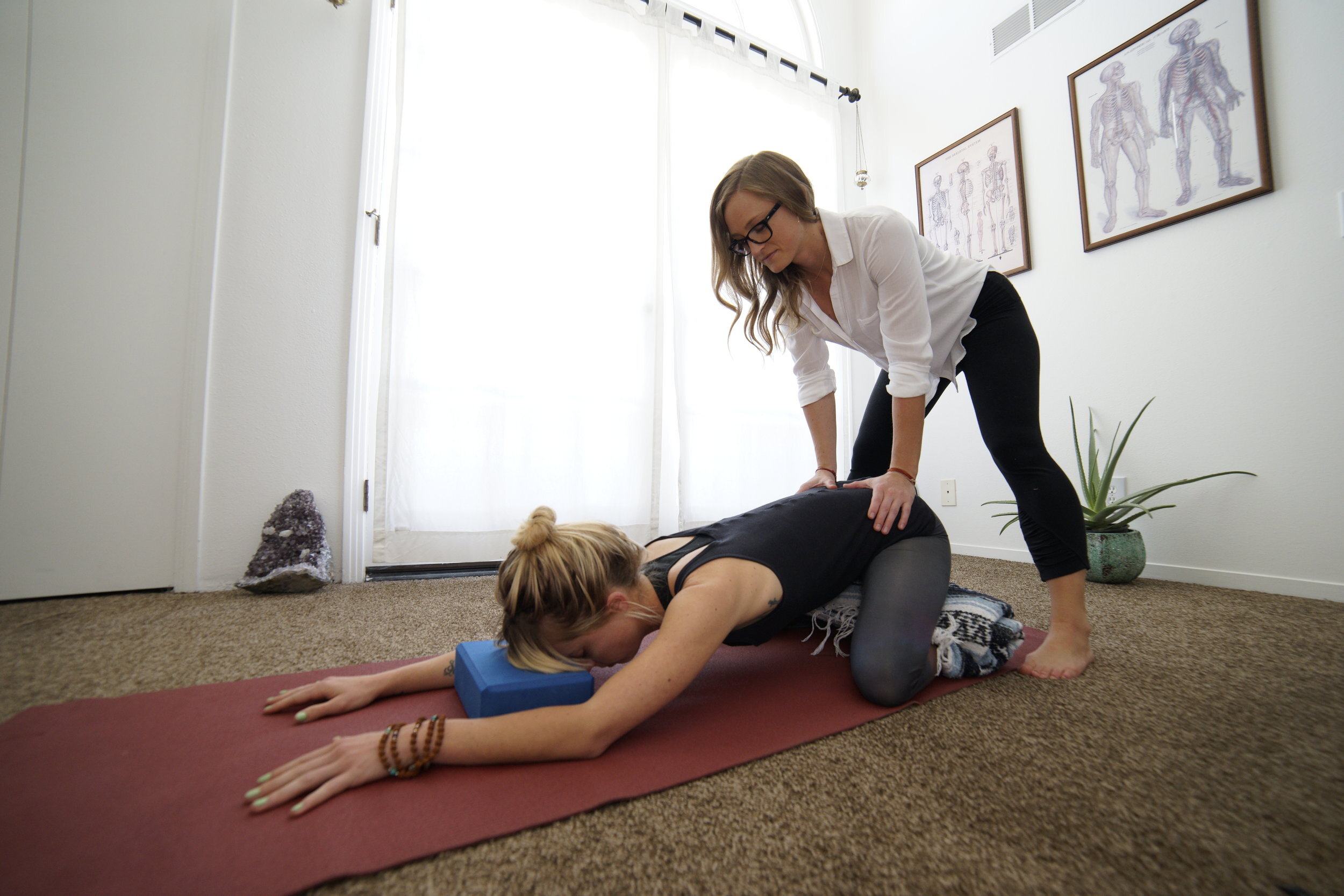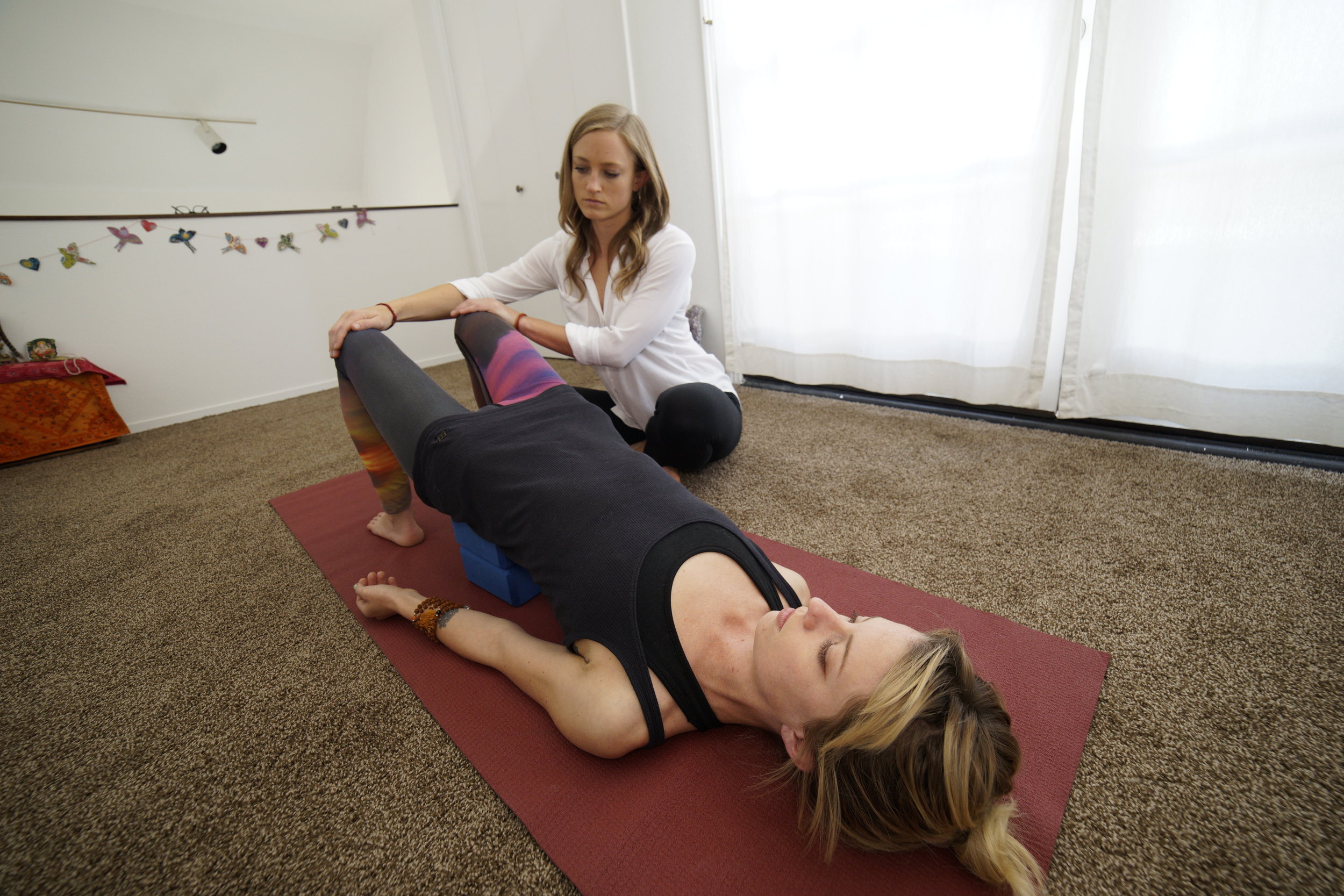Yoga for the Pelvic Floor and Deepening Your Sense of Safety
In light of the intense stress and fear in these unprecedented time I think it’s important to draw a connection between the physical and energetic bodies. Anatomically the pelvic floor is a group of muscles that sits at the base of your body lining the bowl of your pelvis. Energetically the pelvic floor sits in and surrounds the first (root) chakra of the energetic body. To boil it down really briefly the root chakra represents our basic instinctual survival needs. It deals with things like safety, boundaries, security, our ancestors and family, how supported we feel. Many of us are feeling threatened in all of these aspects right now so my hope is that perhaps even if you don’t have pelvic floor “issues” these poses might help you to connect with your root (or pelvic floor) in way that is healing to the stressors we all are accumulating in our bodies right now during this trying time in our country.
Below are 3 of my favorite yoga poses to help increase pelvic floor awareness, proprioception (the feeling of where we are or a body part is in space), and connection to our roots.
A couple of disclaimers: 1) In my workshops I go through a full lecture on anatomy and function prior to teaching yoga postures because having a clear mental image of these structures is key in making the mind/body connection to this “foreign” area of our bodies. For the sake of time today I’m going to refer you to my good friend Rachel Gelman, DPT's ANATOMY BLOGS for MEN AND WOMEN in order to get you acquainted to the pelvic floor. 2) My advice is to always consult with a trained physical therapist for a full evaluation of your pelvic floor- especially if you have pain!
With of all that said please enjoy exploring these poses for pelvic awareness, how to perform them, and most importantly what to think about while moving through the postures. These poses are generally appropriate for anyone (though there are some exceptions) building awareness of their pelvic floor and looking to facilitate the mind/body connection.
Cat and Cow Poses
Start in a table top position with a neutral spine. Make sure your hands are right under your shoulders and your knees directly under your hips.
Inhale into Cow pose by tilting or spilling your pelvis forward and extending your spine. Gently look up and pull your chest forward through your hands to gain length. As you do this imagine your inhale filling your pelvic bowl and the area between your sitting bones. See if you can sense a widening and softening at your perineum to release the pelvic floor.
Exhale into Cat pose by gently flexing or rounding your spine and looking to your belly. DO NOT overly tuck the pelvis, but take note of how this pose gently engages your pelvic floor compared to Cow.
Repeat each pose, moving with your breath 5-10 times and notice sensation in your pelvis/ pelvic floor. Feel your pelvic bowl expanding and softening especially in Cow pose. Also notice any emotions or changes in energy as you bring your awareness into your root.
Modifications: This pose can be performed in an upright kneeling position, sitting in a chair, or in standing if needed.
Child's Pose
Starting on your hands and knees, bring your big toes to touch and your knees almost as wide as your mat.
Slowly sit your pelvis back towards your heels as your forehead rests on the floor with your arms in a comfortable and supported position. Only sit into this pose to where you feel a GENTLE stretch in your perineum if you have any pain at all.
The goal of this posture is restorative in this example so get as comfortable as you can (see use of props on right, or use a bolster/pillow under your chest if needed).
As your spine elongates breathe into your low back, sacrum and pelvic floor. See if you can make more space in your pelvic bowl. Breathe down into the base of your body and feel your perineum (the area between your vagina and anus) lengthen and expand. Stay and breathe and notice any feelings that come up for 10-20 rounds of breath.
Modifications: You can perform this pose with a variety of props, in a chair with your hands on a table, in a squat position, or standing at a wall with your hands on the wall if needed.
Supported Bridge Pose
Start off on your back, lift your pelvis, and slide a yoga block or a small towel roll under your sacrum. You want a gentle hip elevation so that your pelvic floor is slightly on slack which allows the pelvic floor to release and “drop more effectively.”
Relax your pelvis into your prop and breathe into the root of your body, your sacrum, and your pelvic floor. Notice what it feels like to connect to this part of your body.
Breathe here for 2-5 minutes. Take your time coming out of the pose by gently removing the prop and lying flat on the floor for another 30 seconds. Notice any sensations or feelings that arose.
Perform these poses once a day and especially when you notice tension arising in your body. You can also practice bringing awareness into your pelvic floor, perineum, and sacrum throughout your day by noting sensation and consciously sending your breath down into your pelvic bowl. Observe the grounding effects of these simple practices and how they make you feel. If they make you feel good.... do them more!






